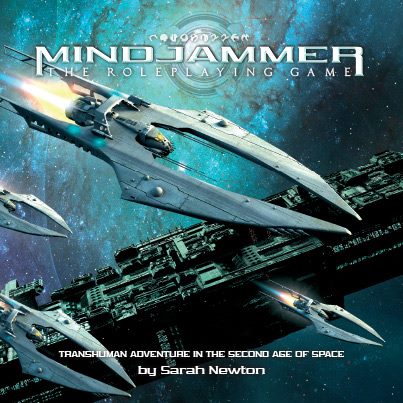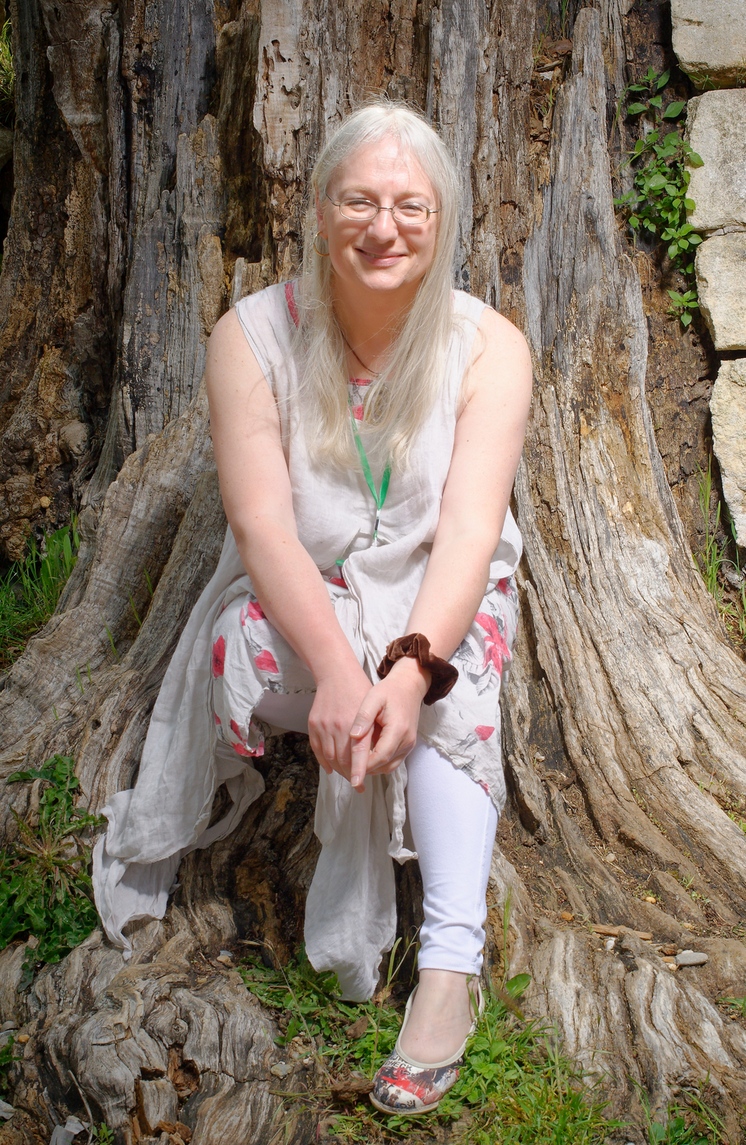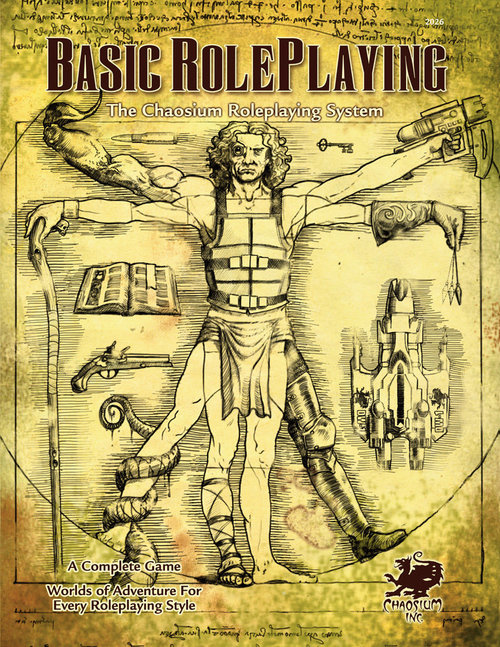Women in Tabletop Gaming Month #9: Chaosium interviews Sarah Newton
Posted by Michael O'Brien on 14th Jun 2018
Lynne Hardy interviews award-winning RPG writer Sarah Newton for Women in Tabletop Gaming Month
Serious ones first:
1. What is your background?
Well, I have a number of backgrounds! Educationally I’m a literature and languages fiend—I studied Russian and German language and literature at Cambridge University, England, then went to Japan to work as a translator and interpreter, where I lived for five years, learning Japanese, and getting too little sleep and drinking far too much saké. I then got into TV production, then the internet, and ended up a dot.com cowgirl during the Nineties boom right through to 2005, working first as a coder then as a product manager architecting financial services websites in the City of London for investment banks and asset management companies. I fled that life in 2005/6 for the peace and quiet of Normandy, France, where I spent a couple of years with my blues-muso husband doing the self-sufficiency thing—a crazy time of pigs, chickens, sheep, tractors, scythes, hay, and the whole Good Life shebang while we renovated an old farmhouse shack into the slightly more modernised shack we live in today.
2. How long have you been gaming? What attracted you to it in the first place, and how were you introduced to it?
I’ve been gaming since July 1980. I can almost remember the date—the last day of my first year at secondary school in the UK, when I spotted a boy with a softback of TSR’s AD&D Player’s Handbook. I looked through it, and the images and maps and ideas just blew my mind—I went straight home that afternoon and spent all my pocket money on Buffalo Castle for Tunnels & Trolls. I didn’t even know you needed a core rulebook—I spent the summer making up my own rules and writing my own solos, until finally it all clicked into place and I got a group game going with my friends playing T&T, then Metamorphosis Alpha, The Fantasy Trip, White Box D&D, RuneQuest, Traveller…
I think what attracted me to RPGs was the total freedom to exercise your imagination and have amazing adventures. It didn’t matter that it all happened in a shared storytelling world—in fact, that make-believe-made-real aspect was probably part of the appeal. All through my childhood I’d read and loved SF and Fantasy, and on TV and in movies too—The Six Million Dollar Man, Star Wars, Narnia, and Tolkien were just bread and butter to me. Finding a game where we could invent our own adventures just like the ones we were reading, explore whole new worlds and galaxies really with no limitations—wow! How about that for blowing a 12-year old kid’s mind?
3. How did you get into the gaming industry?
Gradually and all at once! I’d been in France for a couple of years. I’d always played RPGs, mostly GMing, and had reams and reams of written material (I still have it all). At the time, I was utterly stoked that Chaosium was about to re-release Basic Roleplaying in the Big Gold Book—I’d been a huge fan of the system ever since starting playing RuneQuest 2nd Edition in late 1980/early 1981 (Glorantha has been pretty much my favourite fantasy RPG world ever since then). I signed up for an early pre-release copy of the book. Now, I should say that I’d spent a good number of years writing functional specifications for pretty hard-edged websites in a previous life, as well as being a linguist and general word-fiend, so when I opened the unproofed pre-release copy of BRP, I just went into this typo-monster fugue and started spotting all the proofing issues everywhere. It’s a blessing and a curse; great for work, a bit of a pain in the neck when you’re trying to read a draft text. So, I contacted Charlie Krank who put me in touch with this guy called Jason Durall (see below!), and I asked him if he’d like me to send through the proofs I’d done. He said yes, and then proceeded to suffer under a deluge of Excel files containing every blessed thing my OCD mind could find.
All said and done, Jason was awesome about this random stranger racking up and picking holes in the pre-release draft of his baby. In fact, he took me on board as a proofer, and gave me my first ever credit in an RPG game. I’m still working with Jason today; 10 years on, he’s a good and trusted friend and I’ve enormous respect for the amazing work he’s been doing. And we still have a laugh about all those spreadsheets I carpet-bombed his inbox with…
4. What was the first gaming product you worked on, and in what capacity?
The first full gaming product I worked on was Mindjammer 1st Edition, a supplement for the awesome Starblazer Adventures RPG by Chris Birch (now of Modiphius fame). I’d been working on a massive transhuman science-fiction universe for several years, trying to create what would be my perfect science-fiction RPG setting. It would have to include all the 21st century SF tropes—transhumanism, hyper-advanced technology derived from credible principles, believable aliens and astrophysics, all filled with the kind of sense of wonder you get from reading or watching really good SF. I’d been labouring for a while trying to write the setting using Basic Roleplaying, but one of the major tropes of the setting was the conflict between cultures, and measuring the actions of player characters who are trying to manipulate the cultures of rediscovered lost colony worlds when trying to integrate them into an interstellar civilisation. It was a problem of interaction between differing scales of playable entities that I was having trouble making work in the existing rules. In 2008, I discovered FATE 3rd Edition, first via Spirit of the Century and then pretty much immediately after via Starblazer Adventures. And it clicked—this was an RPG system that could do exactly what I needed it to, and in an awesome and exciting way! I wrote to Chris and pitched my idea, and he said go for it. So I did! Mindjammer 1st Edition was published as a supplement for Starblazer Adventures in 2009, and that marked my entry into the world of RPG conventions and publishers—I suppose my true entry into the “industry.” It was a massive learning experience, and truly exciting. I attended my first GenCon with Cubicle 7 in 2010, and Mindjammer won a Judge’s Spotlight Award. I don’t think my feet touched the ground for a week! And I’m forever grateful to Chris for giving me that break—we still work closely together today.
5. What was the last gaming product you worked on, and in what capacity?
Right at this moment I’m working on the English language edition of the RPG Capharnaum—Tales of the Dragon Marked. It’s originally a French-language RPG written and published by the extremely dynamic and creative team at Studio Deadcrows, an RPG publisher based in Montpellier, France (and an amazing group of gamers who I love to bits!). I’d come across the first edition at the Paris RPG salon in about 2009 or so, and immediately loved it and wanted to publish it. In 2012 I founded my own RPG company, Mindjammer Press, to publish Mindjammer as a massive new RPG line, so that gave me the opportunity to finally produce Capharnaum in English. It’s an awesome game—a truly profound setting, with loads of gameable detail and a great line of supplements. The rules are traditional, but with some cool narrative tweaks and an excellent and non-arbitrary improvisational magic system, and it’s a totally gorgeous book. It’s not written by me, but my role has been to translate and re-edit the rules, including innovations brought in by the French 2nd edition of the game, and introduce the whole thing to an English-speaking audience. I’ve also been able to add a few tweaks myself. It’s been a massive job, but we’re now almost finished and hoping to launch the game in time for GenCon.
6. What has been the most challenging gaming product you’ve worked on, and why? (Alternatively, this could be the gaming product you’ve learned the most from working on)

That has to be Mindjammer. It’s been my baby for over ten years, and I’ve lived, breathed, and dreamed it for at least that long. In 2013, I personally funded a brand new standalone version of Mindjammer, working from the 1st Edition Starblazer supplement but reworking it for the Fate Core rules and massively expanding the setting and detail, including all new artwork. In 2015, my company, Mindjammer Press, ran a very successful Kickstarter which allowed us to fund a huge range of supplements for the line, which we’re still producing—we currently have 12 supplements out there, with plenty more to come. It’s been a huge learning process—running a company, running a Kickstarter, developing a product line, building a team, and also finding the time to write material and have a life at the same time—but in 2019, Mindjammer will celebrate its 10th anniversary and I’m just as excited about it today as I was back in 2009. It’s a huge and inspiring setting, there’s so much to write, and Mindjammer fans everywhere have been hugely encouraging. Studio Deadcrows, the French publishers of Capharnaum, have published a spectacular French version of Mindjammer this year, and we’ve been busy touring it all around the French conventions this summer. Expansion continues! The Commonality salutes you!
7. What has been the most enjoyable/rewarding gaming product you’ve worked on, and why?
I think I’d had to say the whole Mindjammer line has been immensely inspiring, but if I had to single out just a product or two for special mention, it would be the last two books we’ve produced, Children of Orion—The Venu Sourcebook, and The Core Worlds Sourcebook. These books each took a couple of years to write, and have really expanded Mindjammer into new places. They’re also quite beautiful objects: Jason Juta is an amazing artist and also an inspired art director, and he and his team have visualised my descriptions so fantastically that it’s really like we’ve both been plugged into the same Mindscape. I’m a huge SF RPG fan, and I can seriously say I don’t think I’ve ever seen two RPG supplements quite like these. They’ve set the bar very high for all of us here at Mindjammer Press, and we have the Fringe Worlds and the Hypertech book slated next!
And now for some more frivolous ones:

8. Just how large is your dice and/or stationary collection?
I don’t have a stationery collection, I have a stationery cloud. It’s effectively a group intelligence with which I’m in partial symbiosis. If I settle in any one place, small piles of paper, paper clips, staples, pens, and pencils start accumulating around me, like some weird cybernetic extension of my own brain. For stationery, it’s amazingly mobile.
My dice collection, on the other hand… I have a dice bag that looks a bit like Harry Potter’s Sorting Hat upside-down. I think my granddad returned with it from the Second World War. It’s leather and beaten and scratched and apparently indestructible. It contains a couple of hundred dice, some of which haven’t been seen for years. I have two pink and white d20s numbered 0-9 (remember those?) from 1980 which are now basically spherical—each takes about ten minutes to come to a full stop—and a bunch of d4s that double as pretty evil caltrops. I’ve syphoned off some of the more presentable dice into a more well-behaved little felt bag for conventions and public demos. Brown Bag is like Father Jack, definitely not to be allowed out of the house unaccompanied.
9. What is your favourite gaming snack?
Player characters! Hahahahahaha…! OK, you’ve heard that one before. I’m one of those gamers who never plans snacks, assuming that I’ll be talking all the time, then nibbles everyone else’s and ends up fleeing during half-time to replenish supplies with whatever’s available in the cupboards/fridge/corner store (I’ve discovered hot green jalapenos aren’t ideal). I tend to drink just water, unless it’s after midnight, in which case COFFEE. But during play I’ll eat anything that can’t outrun me.
10. What’s the most unusual/exotic location you’ve gamed in? Or that one of your games has been played in?
One of the nice things about gaming in Europe is that you get to game in castles. That’s cool. I love having to compete with the actual scenery in my descriptions. Last week at the Chimeriades festival I got to GM Capharnaum, Mindjammer, and the new RuneQuest in vaulted chambers in a castle built in a gorge that was basically France’s version of Dragon Pass. That was neat.
But nothing I’ve done compares to places Mindjammer gamers have played in. From the Kickstarter and social media, I know we have Mindjammer gamers from literally all around the world, and a lot of them are in the armed forces and are playing while on active duty. I’ve had mail from people with comments and questions while in Afghanistan, the Middle East. Kudos and respect to those folks. It’s humbling to belong to such an amazing tribe. Gamers are awesome.
You can find Sarah online at:
Websites: www.mindjammerpress.com, sarahnewtonwriter.com
Blog: https://sarahnewtonwriter.com/the-meme-machine/
Facebook: www.facebook.com/shairasu, www.facebook.com/MindjammerPress
Twitter: @SarahJNewton, @MindjammerPress

